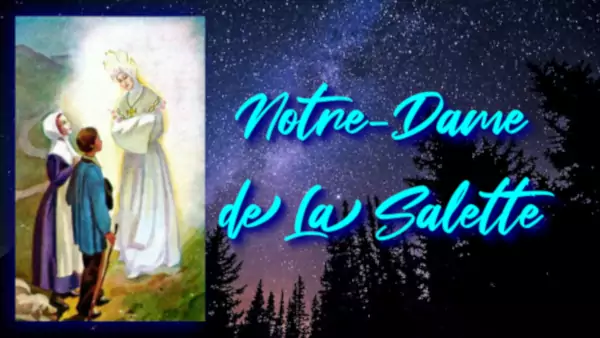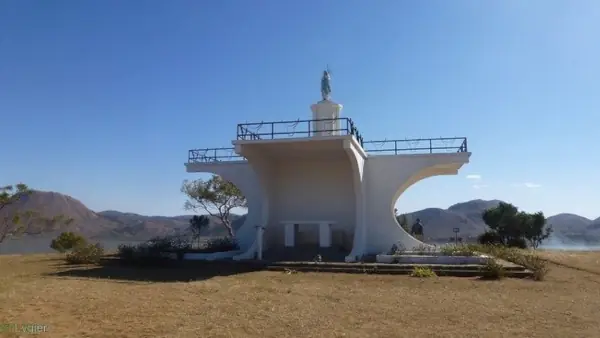September 19 - On Saturday, September 19, 1846, at about 3 p.m., on a mountain near the village of La Salette-Fallavaux, two young shepherds, Mélanie Calvat, just under fifteen years old, and Maximin Giraud, eleven years old, see a "beautiful lady" in tears appearing in a resplendent light and addressing them.
In the evening, they talk to their masters about it. The widow Pra (known as the widow Caron), Mélanie's mistress, thinks that they have seen the Blessed Virgin and the children are encouraged to tell the priest of La Salette everything. They do so the next Sunday morning. The parish priest cries with emotion, takes notes and, again in tears, speaks of the fact in his preaching.
The bishop of Grenoble, Mgr Bruillard, once informed of the events, had a canonical investigation opened. After the conclusion of the investigation, he published a text on September 19, 1851, to be read in all the parishes of the diocese where he proclaimed the authenticity of the apparition. In 1855, Bishop Jacques Ginoulhiac, Bishop of Grenoble, after a new investigation, confirmed his predecessor's decision4. In 1879 the church of the sanctuary was officially consecrated and was promoted to the rank of minor basilica.
The spiritual message left by Notre-Dame de La Salette, brought back by the children, is a message of hope. The Church emphasizes that in this message the Virgin recalls that she continually intercedes for men with her son, that she sympathizes with the trials of her children and suffers with them. Our Lady's words also show a concern both spiritually and for the material goods (food) of her people, and for the consequences of the coming famine. In her invitation to prayer, Mary offers the Our Father and the Hail Mary to the children. The Church affirms that "the spiritual message given at La Salette" initiated "a movement of conversion that went beyond the canton of Corps and France, bringing about a spiritual renewal," which continues to this day.








